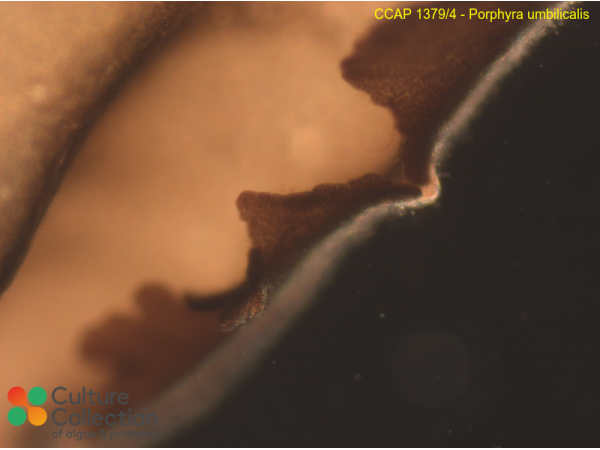(Bold text = submission by CCAP staff or collaborators)
Note: for strains where we have DNA barcodes we can be reasonably confident of identity, however for those not yet sequenced we rely on morphology
and the original identification, usually made by the depositor. Although CCAP makes every effort to ensure the correct taxonomic identity of strains, we cannot guarantee
that a strain is correctly identified at the species, genus or class levels. On this basis users are responsible for confirming the identity of the strain(s) they receive
from us on arrival before starting experiments.
For strain taxonomy we generally use AlgaeBase for algae and
Adl et al. (2019) for protists.
| Attributes | |
| Isolator | Blouin & Brawley (2008) |
| Collection Site | exposed shore, mid-intertidal zone Blueberry Hill, Schoodic Point, Maine (Acadia National Park) USA |
| Notes | Isolation: microscopic isolation of blade area free of endophytes, with use of GeO2 and Pen-Strep antibiotics; Reacquired from S Brawley November 2017; Material grows best with bubbling of medium to simulate intertidal habitat; also, after a diameter of about 4 cm is reached, the material grows best if it is not tumbled but is positioned (e.g., with an aquarium store "seaweed clip" by its rhizoid so that natural polarity is maintained. If tumbled at larger size, the margin of the blade tends to fold over, neutral spores germinate in place and it isn't pretty. Material will also be fine in flasks on a shaker; This macroalgal culture contains bacteria and probably other organisms in low numbers, we are happy to provide further info on specific strains if you contact us 10 C is best for growth, but it is fine from 5-12 C; P.um.1 grows at 15 C, but as temperature approaches 20 C, growth slows and red color is hard to maintain. |
| Axenicity Status | Bacteria and other organisms present |
| Area | North America |
| Country | USA |
| Environment | Marine |
| GMO | No |
| Group | Macroalgae |
| Latitude | 44 20' 1.68" N |
| Longitude | 68 3' 29.14" W |
| In Scope of Nagoya Protocol | No |
| ABS Note | Collected pre Nagoya Protocol. No known Nagoya Protocol restrictions for this strain. |
| Collection Date | c 2008 |
| Original Designation | P.um.1 |
| Pathogen | Not pathogenic: Hazard Class 1 |
| Strain Maintenance Sheet | |
| Toxin Producer | Not Toxic / No Data |
| Type Culture | No |
| Taxonomy WoRMS ID | 144437 |
| Other Designations | Pum1 |
CCAP 1379/4
Porphyra umbilicalis
- Product Code: CCAP 1379/4
- Availability: See Availability/Lead Times



